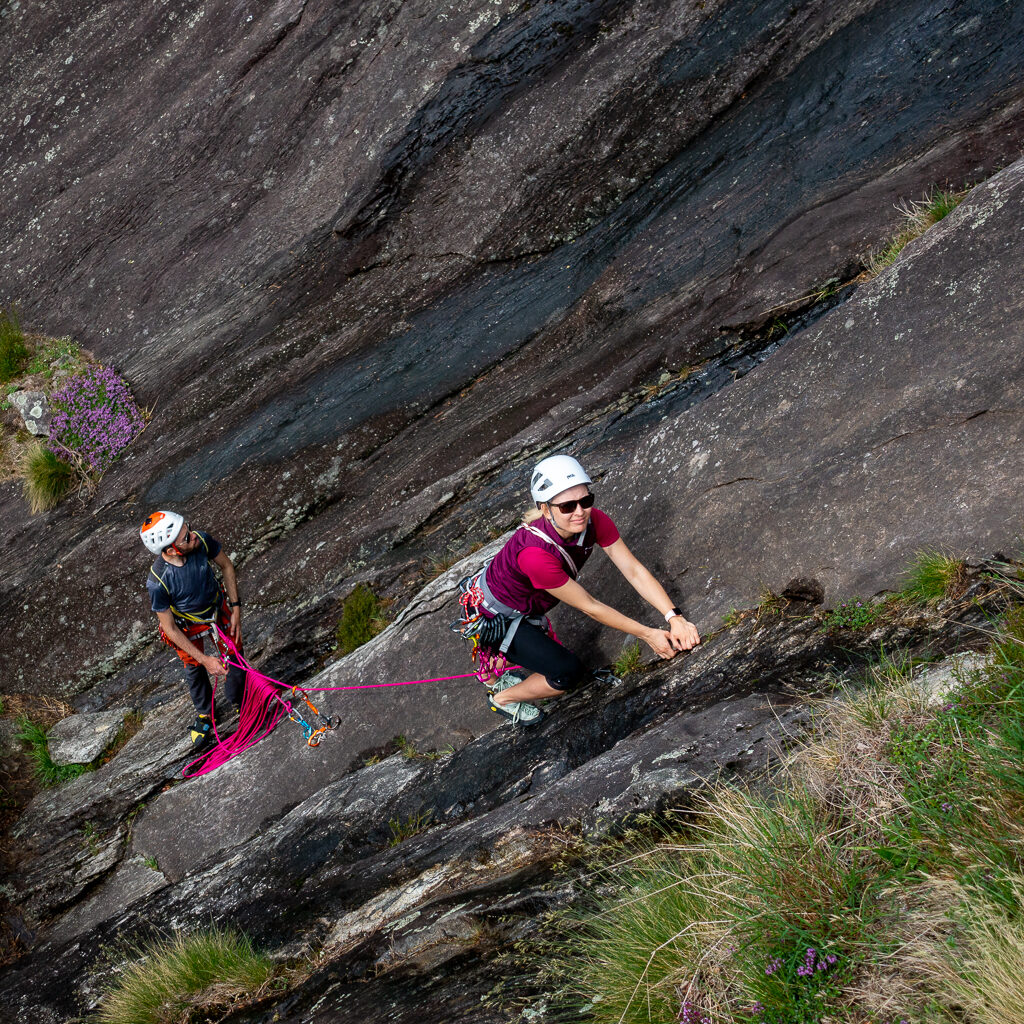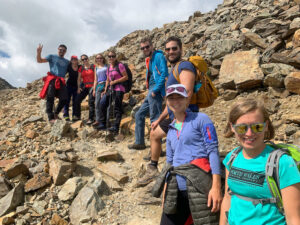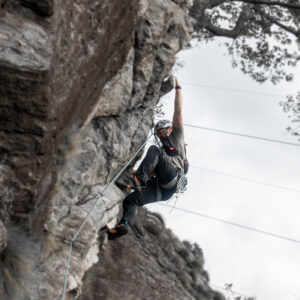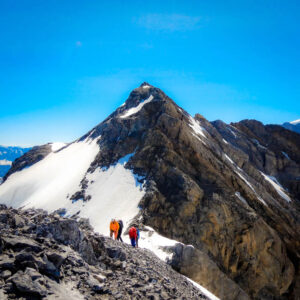Next level climbing in Ticino - May 2021
I am not an expert in climbing. I only started climbing last year, in September 2020. We organized a first climbing course with our mountain guide Beni to learn how to climb. The course was held outdoor in a climbing garden to learn everything we need to know to go climbing safely by ourselves. Thus, the focus was on safety and how to belay your partner.
It has not been a year since then and we are already taking the next steps in our climbing education. We have used the late summer and winter months to go climbing, outdoor as well as indoor. None of us have become exceptional climbers in that time, but we are confident in our belaying skills and are all looking forward to experiencing longer outdoor climbs, and perhaps, even reaching some summits in the process! With that in mind, we organized a multi-pitch climbing course early in the year to allow us to go explore Switzerland in an additional dimension this year.
Location, Location, Location
There are a couple of considerations that have to be taken into account for a multi-pitch course. First off, there need to be enough routes for multiple teams, not just one. Then, it should be within the range of climbing skills. For us, this means somewhere below difficulty 5 ideally.
Initially, we planned to go to eastern Switzerland. However, the weather forecast was not looking too great all week. Speaking to Beni, we concluded that it would be much safer to go to the Ticino instead. Thanks to the flexibility and agility of the participants, we managed to completely change the destination just one day before the course. The only additional cost came from the fact that we spend the night in a hotel as the course lasted for two days. But we would rather do that than having to potentially cancel the course, even if no costs would have incurred from canceling. We were all just too excited to learn how to multi-pitch!
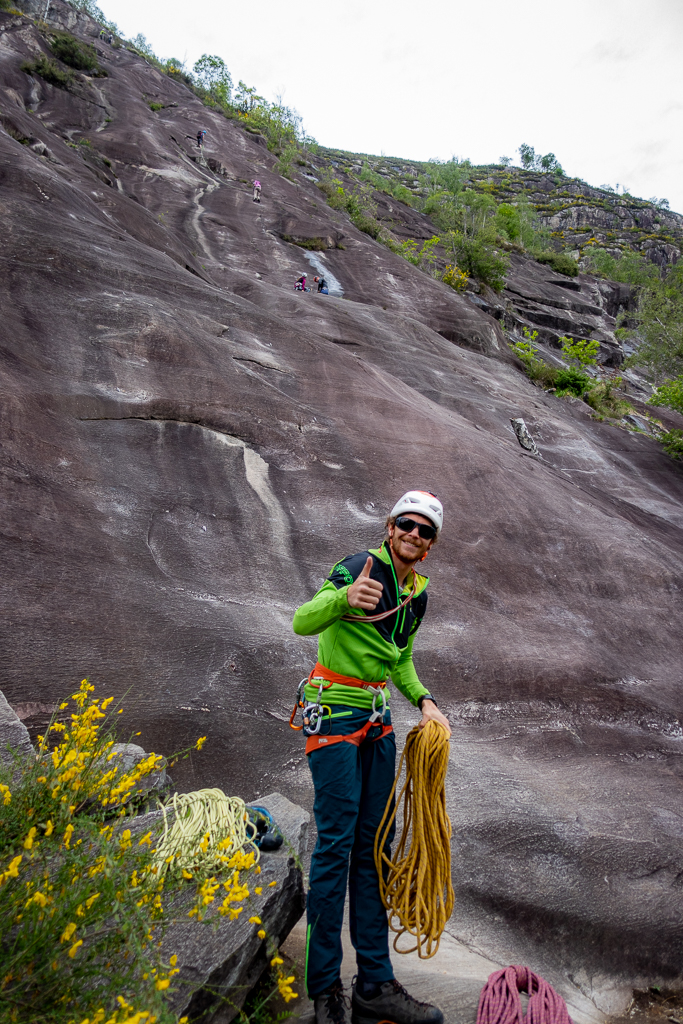


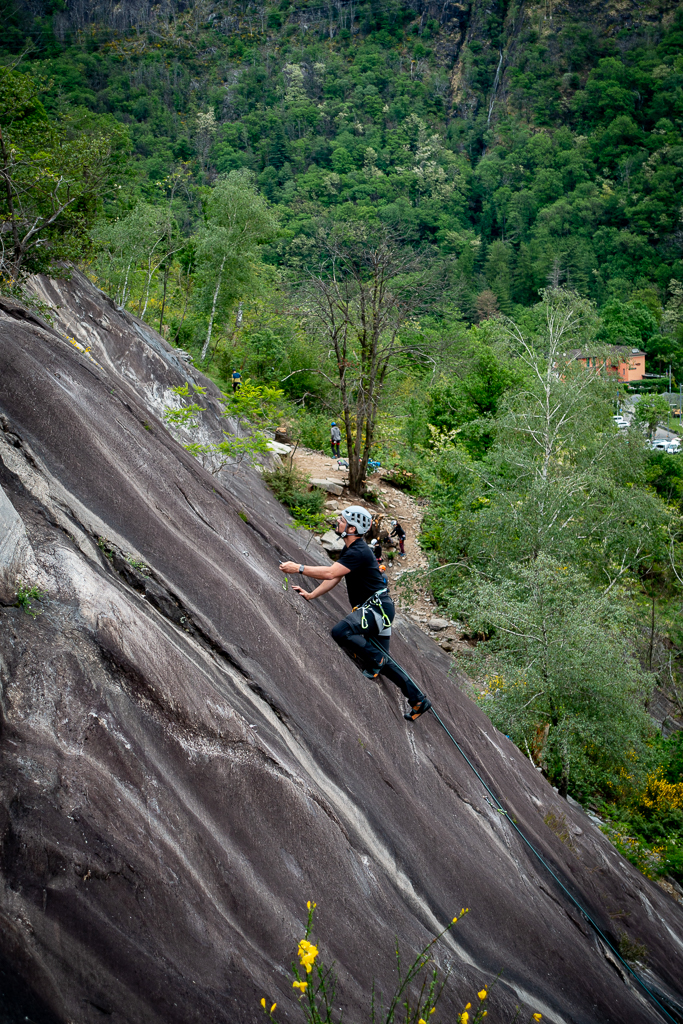
Learning new skills
Our experience in climbing has so far been limited to single pitches, but we all knew how to climbing indoors and outdoors in lead. However, we had only ever climbed with single ropes. Now, we would learn how to climb with half ropes and how to build a stand.
The whole point of multi-pitch climbing is to climb for longer than a rope length. This means that at some point, the leader has to stop, build a so-called stand, and then belay the buddy up to their level. This was the first thing we got to learning as it did not require us to climb and we could do so at the bottom of the wall. The concept is pretty straightforward. First, you secure yourself, then you build a belay station to bring up your buddy. But the exact procedure and knots take some time to get correct. After spending the morning learning these, we took a short break for lunch that we had brought, before starting to learn Abseiling.
Abseiling, also known as rappelling, is the second important technique we would learn during this course. Some climbing routes will allow you to exit at the top and then hike back down to the beginning. But more often than not, you will have to rappel back down. Again, we practiced the technique on the ground until everybody felt confident in getting all the steps right alone. At this point, we were starting to get ready to try out some of our learnings for real.
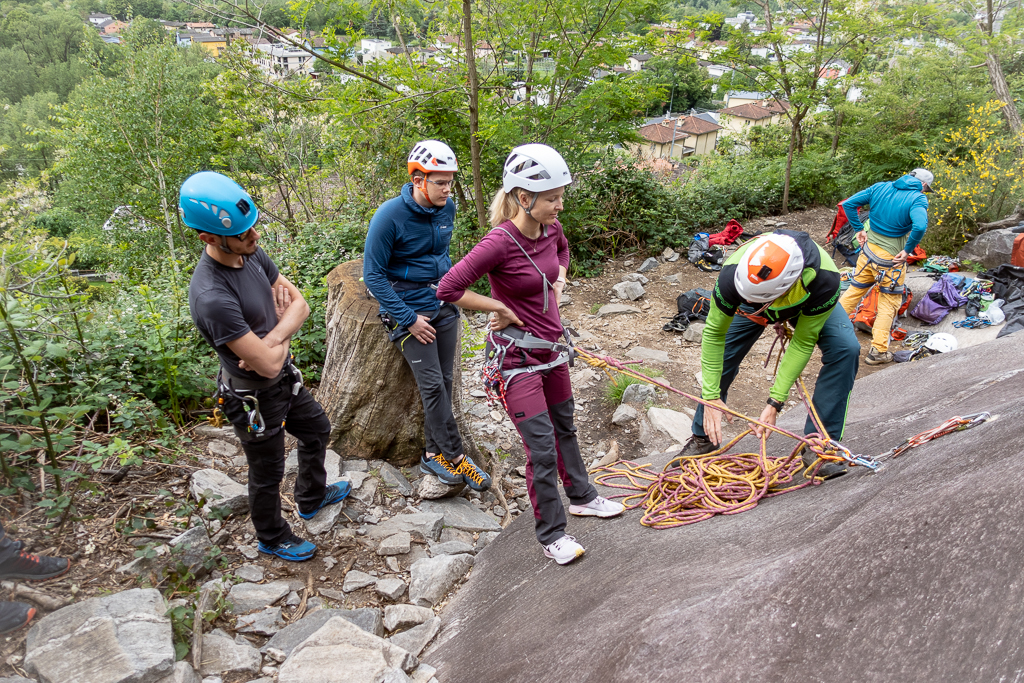

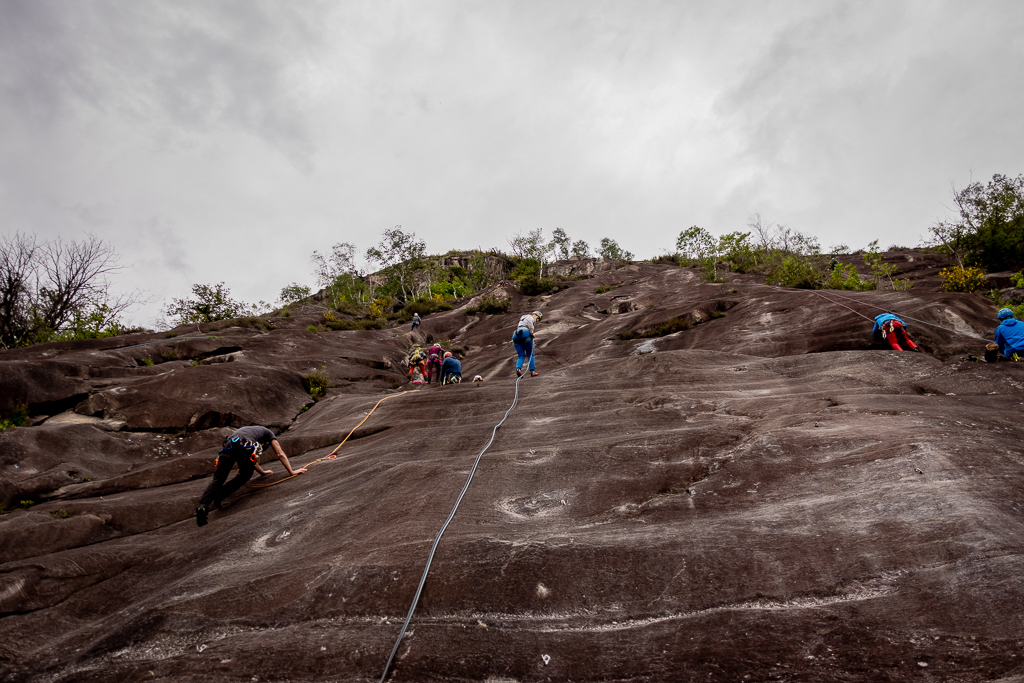
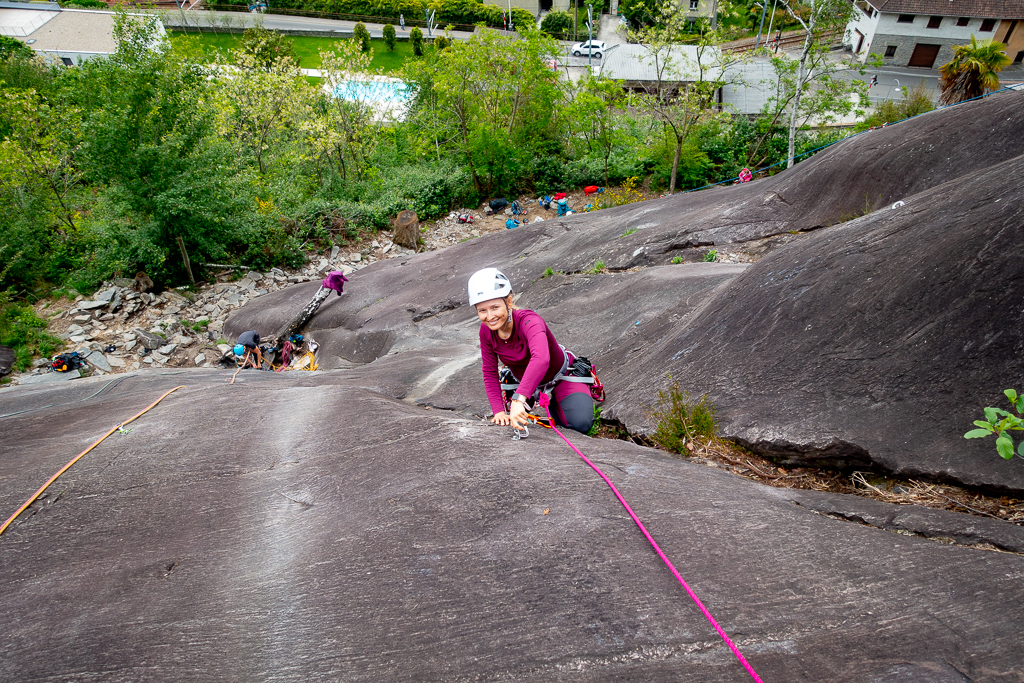

While we were starting to climb, our mountain guide was ready at the first stand installation to welcome us after the first pitch. The lead climber’s role was now to build the stand as learned. Beni would stand next to us during the whole process to make sure we would not make a fatal error. And thus, we were putting into practice, all that we had learned on the first day. As it was getting later in the afternoon, each team only did about three pitches before rappelling back down to the start.
The second day was reserved for a full day of practical experience. We switched to a new wall so that the experience was fresh and began to climb straight away. We were among the first to arrive at the wall, but we would not be the last. As we got to the top, it was already past lunchtime and we still had to rappel back down. And so, by the time we got back down and had our lunch, it was time to pack up. We still had to travel home, and we knew there was about to be tons of traffic in front of Gotthard. And so, the course came to its conclusion

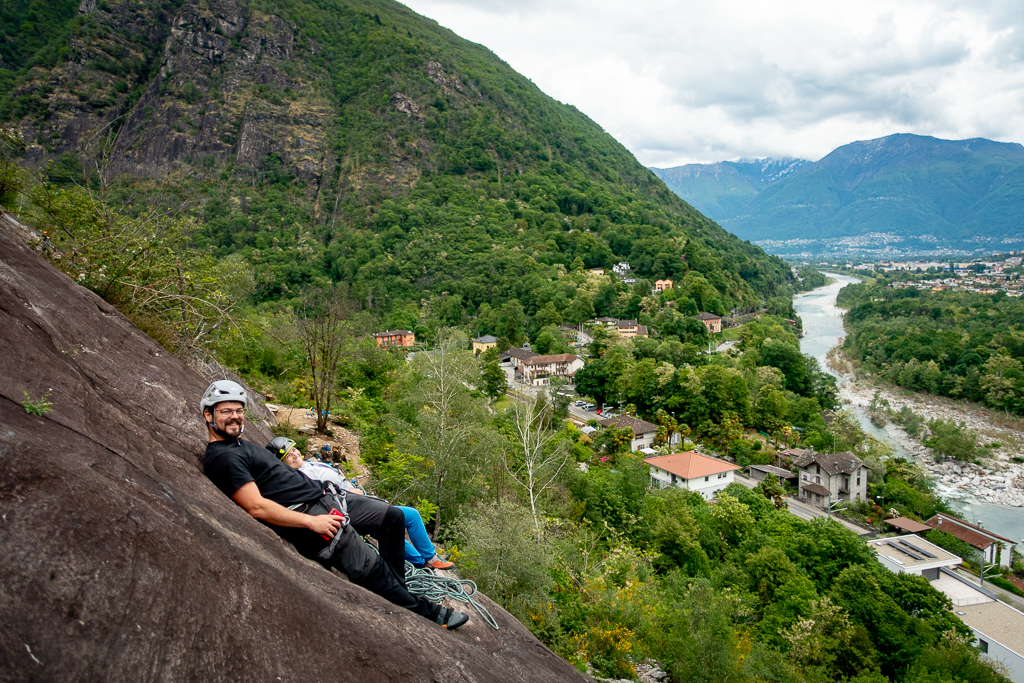
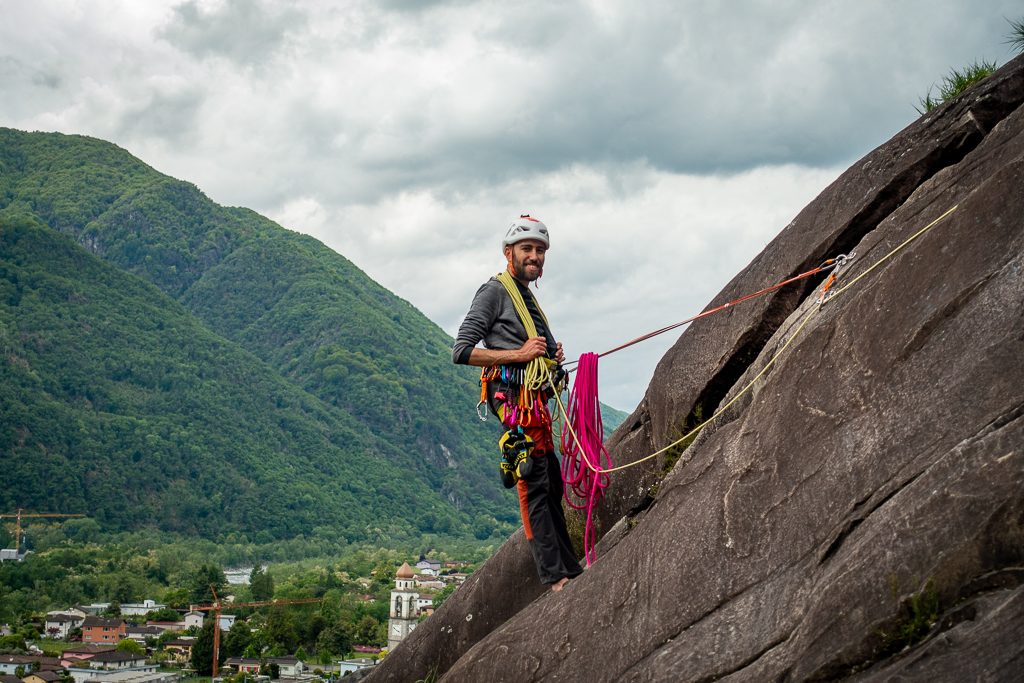
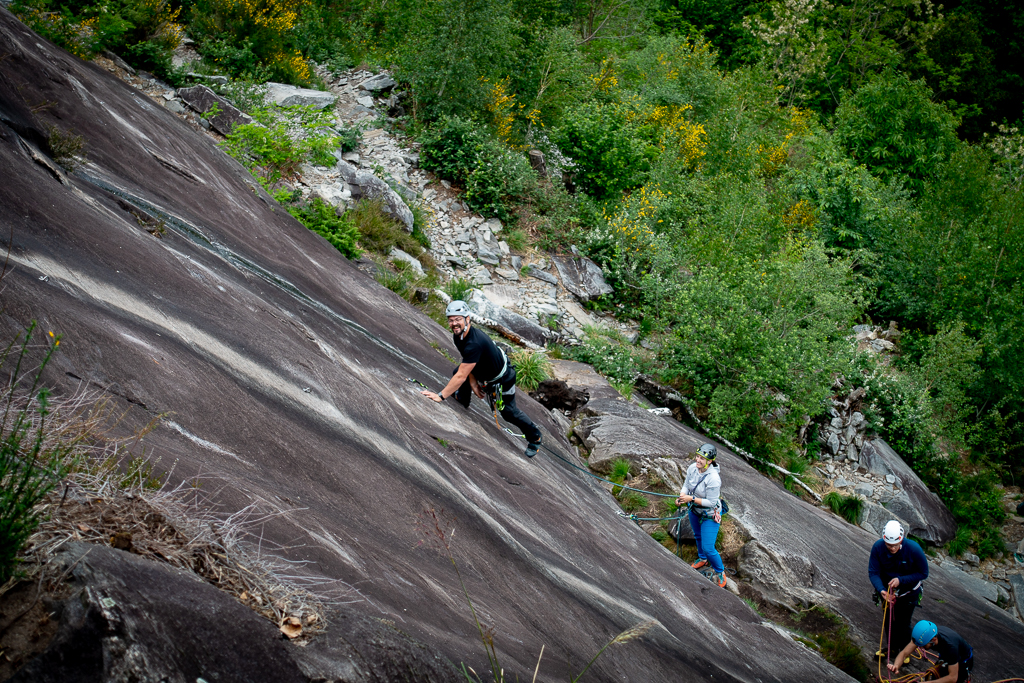
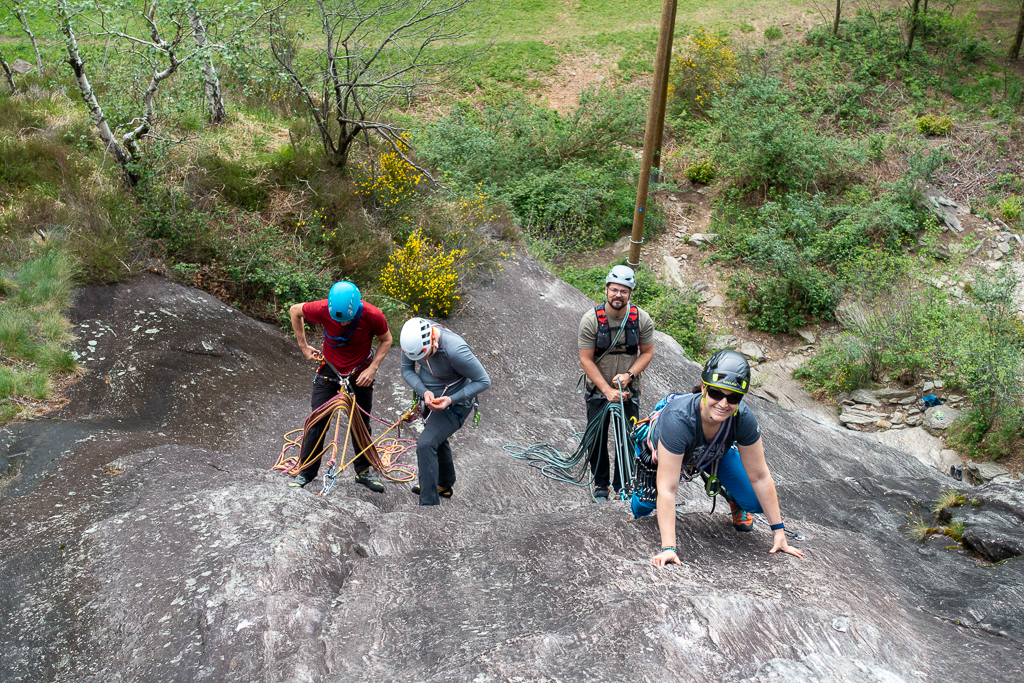
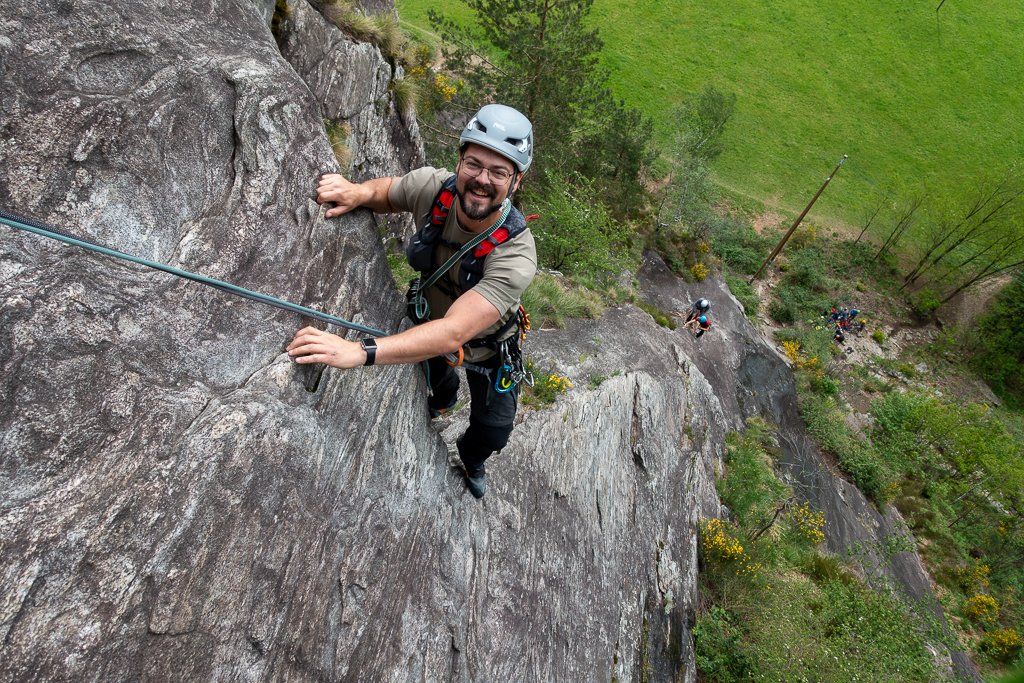

Gear required for multi pitching
Of course, you need all the gear for outdoor single-pitch climbing. In addition, you will need about four extra screw carabiners, a prusik rope, and a rappel-able belay device, such as an ATC or a Megajoule.
Next Steps, go climbing!
As with the beginner’s course, the most important aspect is to continue climbing as not to forget everything we have learned. The best places to find any climbing routes in Switzerland for beginners are the Plaisir series of climbing guides. They exist for various territories of Switzerland and cover single and multi-pitch outdoor climbing. Alternatively, you can check out the SAC website and tour portal if you are a member.
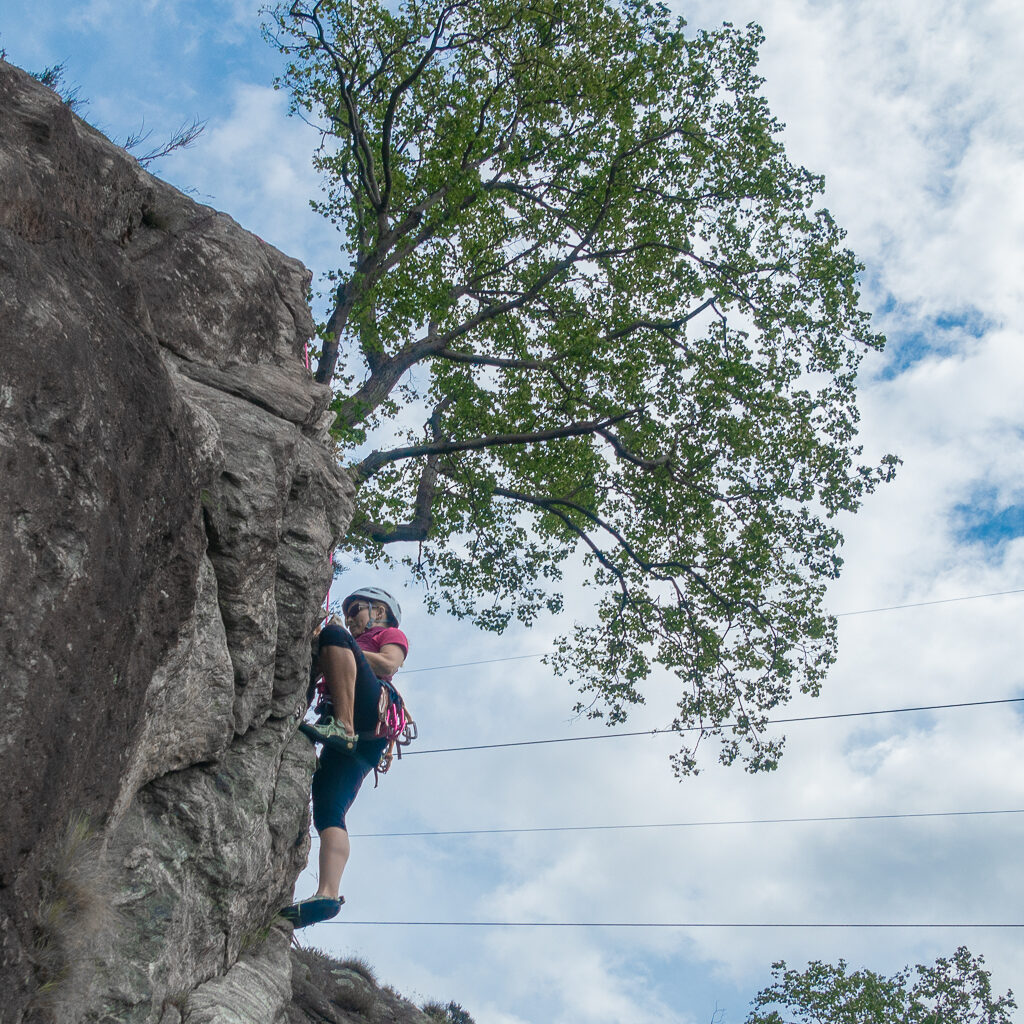
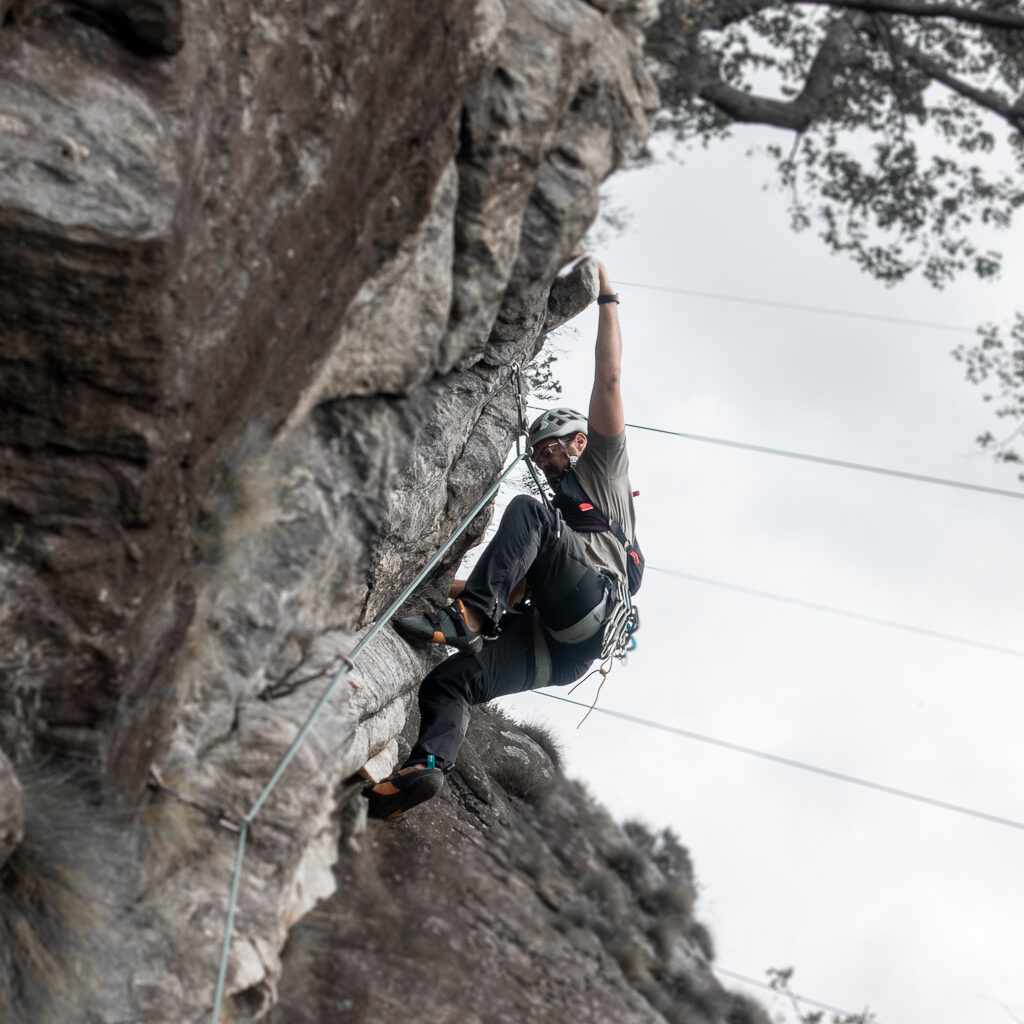
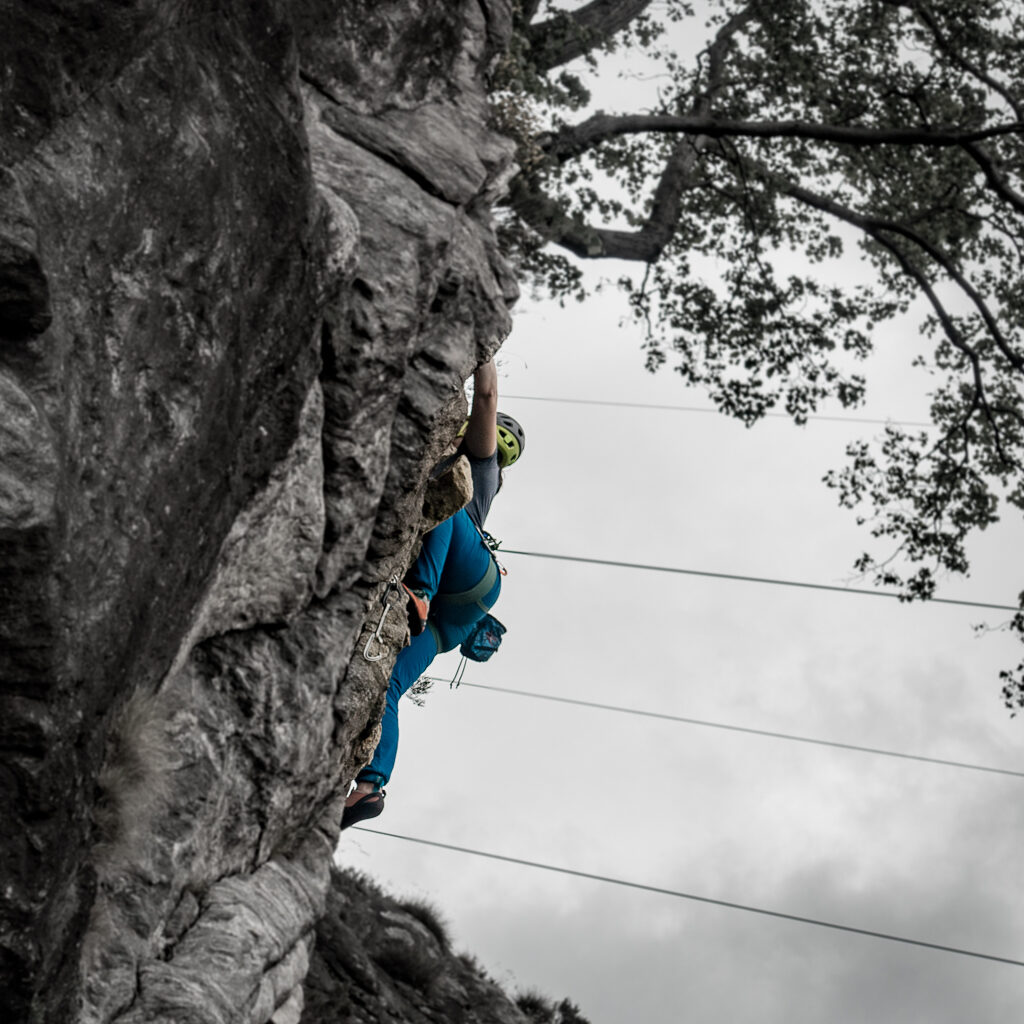
Where can I find a course?
Check back here regularly or sign up to our Telegram channel here to be informed when a course goes up. I can also recommend Touring monkeys. They also organize courses on a semi-regular basis check out their website and meetup group here: https://www.meetup.com/de-DE/TouringMonkeys/
